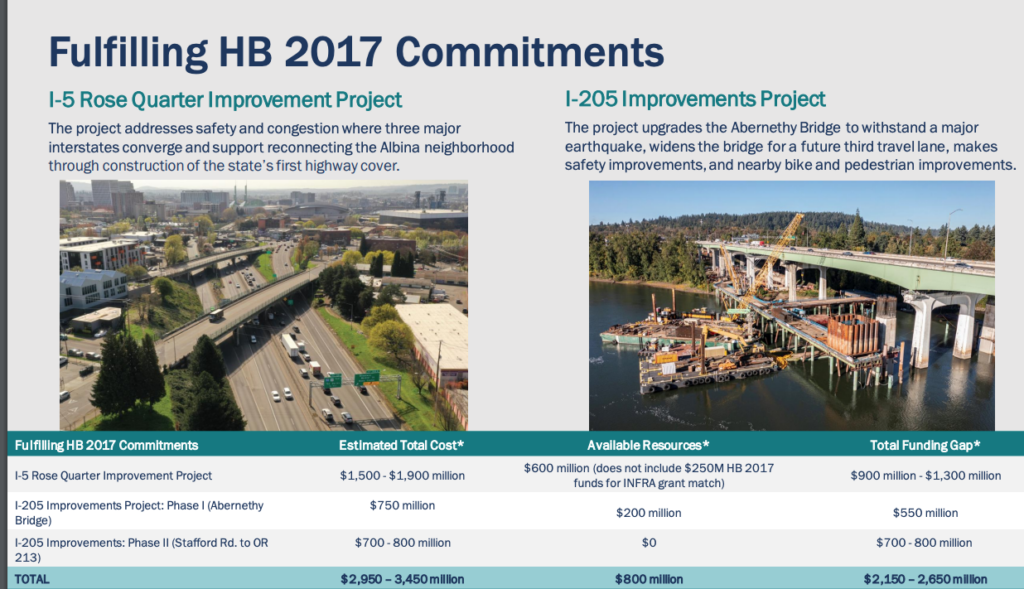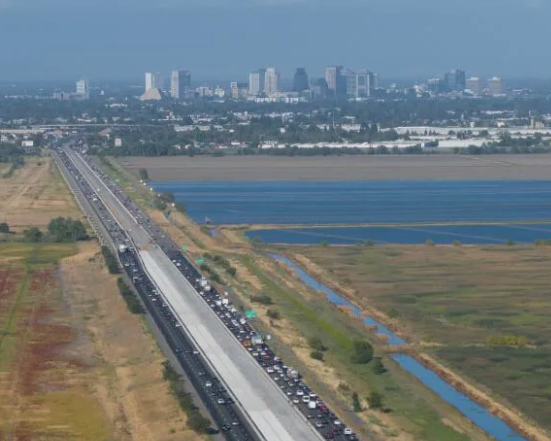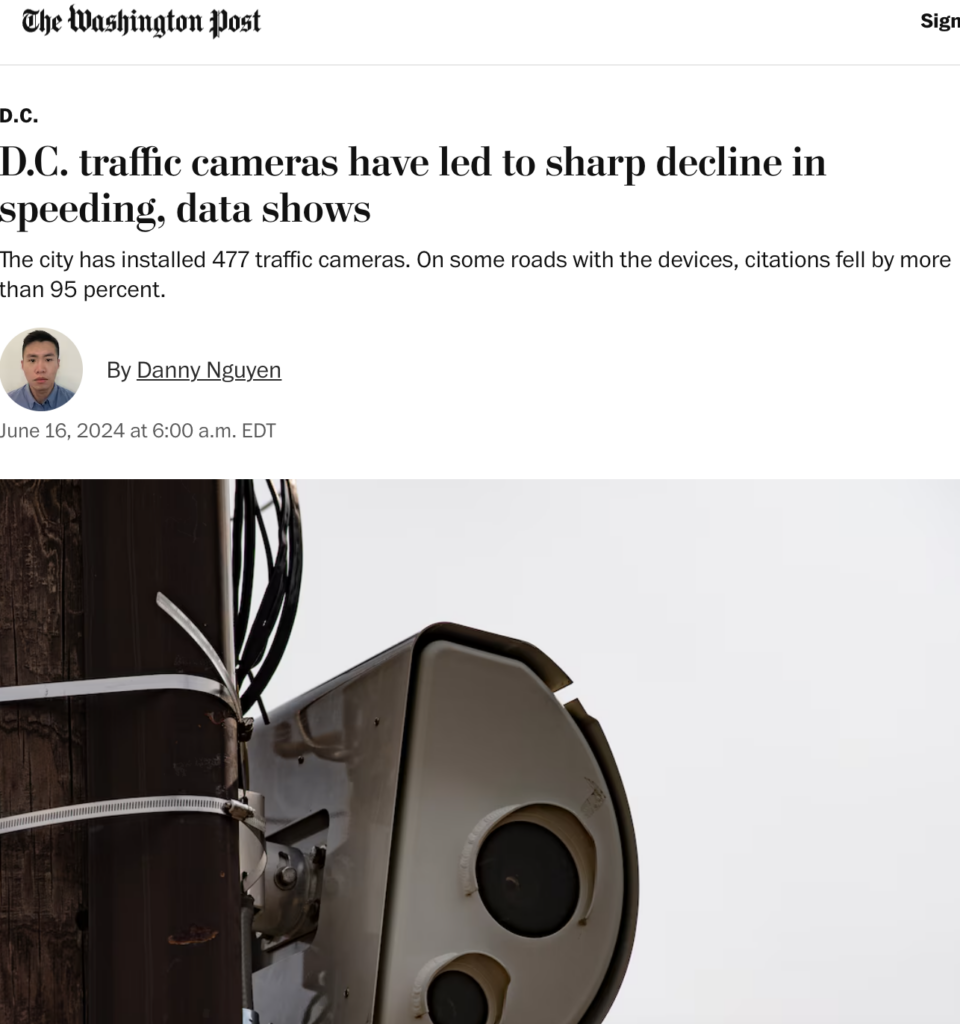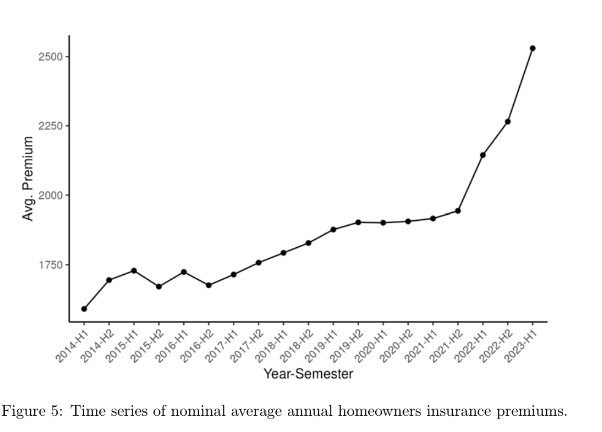What City Observatory Did This Week
Inventing a “commitment” to megaproject cost-overruns. Oregon’s Department of Transportation is is trying to re-write history to create a commitment to unapproved freeway s and massive cost overruns. They’re using this fiction to argue that the state is somehow obligated to pay for expensive freeway expansions and can’t first fix the growing preservation and maintenance backlog on existing roads. The major transportation package passed by the 2017 Legislature authorized zero funding for the I-205 Abernethy Bridge project. In 2024, ODOT now falsely claims that the I-205 project was a “commitment” of the 2017 Legislature. Actually, the original HB 2017 only directed ODOT to produce a “cost to complete” study by 2018.

Then, ODOT”s “Cost to Complete study said the Abernethy Bridge would cost $250 million—its price has now tripled to $750 million. ODOT borrowed the money to get the Abernethy Bridge started, and now falsely claims it can’t spend money on preservation and maintenance because of these imaginary “commitments” to freeway expansion.
Must Read
Congestion pricing: Myriad benefits, but an affront to asphalt socialism. Blogger Cap’n Transit has a good take on the imminent demise of congestion pricing in New York City that makes two key points. The first is that most people would actually benefit from congestion pricing: those who don’t drive would have fewer cars to cope with, faster buses, and a more pleasant urban environment. Those who pay the congestion fee would get what the Brits call “value for money” a faster, less congested trip than they do today. Cap’n Transit’s second point is that the virulent opposition to pricing is driven primarily by symbolism, and implicit rejection of a car-dependent lifestyle, which is anathema to many who are effectively addicted to car travel. Anything that challenges subsidies to auto use and storage is an affront to this world of asphalt socialism:
For these drivers, the government raises them up through free parking, or at least cheap parking. Powerful government figures give them free parking on holidays, free parking on residential streets, in the suburbs, at their country houses. These patrons do what they can to keep the tolls cheap, gas prices cheap, and parking cheap when it isn’t free. They provide parking placards to hardworking civil servants and to people who do favors for them. And they look the other way when drivers double park, park on the sidewalk, go faster than the speed limit, and maybe even kill somebody once in a while.
Congestion pricing, like transit, accommodations for bikes and pedestrians and speed limits are all measures that symbolically challenge auto-dominance, and many who have bought into that world, can’t conceive of anything different, and reflexively oppose it. The implied challenge to auto dependence is really fundamental to the congestion pricing debate.
California collision: Climate Action or Wider Freeways? The decision to move ahead with widening the I-80 freeway between Sacramento and Davis promises to become a major test case of California’s public policy: Is the state serious about fighting climate change, or is it just going to be road-building and pollution as usual? The Los Angeles Times has a story summarizing the battle over this freeway widening.
This is the project that has already prompted the firing of CalTrans Deputy Director Jeanie Ward-Waller, who called out the project’s illegal funding and evasion of environmental laws. Despite approval from the California Transportation Commission, the project is facing a legal challenge for its flawed environmental analysis. CalTrans persists in repeating the discredited theory that by relieving congestion and making cars go faster, wider roads will reduce pollution. The science is to the contrary: wider roads induce more travel, increasing pollution. A court will likely have to rule on this case. As UC Davis professor Susan Handy says:
“These projects are being oversold to the public as a way to reduce congestion; they are not; a court decision is going to be very important.”
This case—Center for Biological Diversity, Natural Resoruces Defense Council and Planning and Conservation League v. CalTrans—could be a landmark. We’ll be watching.
Speed cameras work. Speeding is one of the leading causes of traffic crashes and also worsens the severity of those crashes that do occur. Human enforcement is costly, inadequate and often biased. That’s led many cities to adopt speed cameras to automatically ticket drivers exceeding posted speed limits (usually by a generous margin, 10 mph or more over the limit). The cameras are reviled by drivers who speed, but the evidence from Washington, DC is that speed cameras work.
As the Washington Post reports, the city, which has 477 cameras, finds that there’s been a sharp decline in the number of tickets issued–because fewer drivers are exceeding posted speed limits. The city’s data shows that 70 percent of those who’ve gotten camera-issued speeding tickets haven’t gotten a second ticket, indicating that driver’s learn and respond to incentives. As long as speed limits aren’t enforced, they won’t be obeyed.
New Knowledge
Climate change is driving up homeowners insurance costs. There’s been a sharp rise in homeowners insurance costs in the past decade, principally driven by an increase in losses due to climate related events, like wildfires and hurricanes. A new National Bureau of Economic Research study looks at the growth in insurance costs and their distribution across the nation.
Since 2014, average homeowner property insurance costs have increased by almost 40 percent from a about $1,750 per year to roughly $2,500 per year.
While national average premiums have risen, the highest homeowner property insurance premiums are in those parts of the country with high vulnerability to climate-related losses.
The map shows a clear gradient in insurance costs, with higher insurance burdens in the riskiest coastal areas along the Gulf of Mexico and the East Coast, as well as high premiums (over $3,000 or more) through tornado- and flood-exposed regions of the Great Plains, eastern Colorado, Oklahoma, and North Texas.
While the study shows that climate change is a major factor behind rising property insurance costs, particularly in the hurricane and wildfire prone areas, the likely scale of and incidence of the increases casts doubt on popular theories of how these rising costs will propel migration. The expected increase in property insurance costs over the next three decades in the very most climate change sensitive areas is predicted to be only about $60 per month.
. . . we estimate that the top 5% of climate risk exposed homeowners would see increased premiums by 2053 of $700 per policyholder under a conservative climate change estimate. This estimate should be considered a lower bound, as it assumes that reinsurance frictions do not get worse, that insurers continue to offer policies in risky areas, that regulations continue to cross-subsidize risks within and across states, and does not account for climate impacts on disaster risks besides hurricanes and wildfires.
An annual increase in costs of $700 per year in the most vulnerable locations, while painful, seems unlikely to trigger mass migration.
Benjamin J. Keys & Philip Mulder, PROPERTY INSURANCE AND DISASTER RISK: NEW EVIDENCE FROM MORTGAGE ESCROW DATA, National Bureau of Economic Research, https://www.nber.org/papers/w32579.




